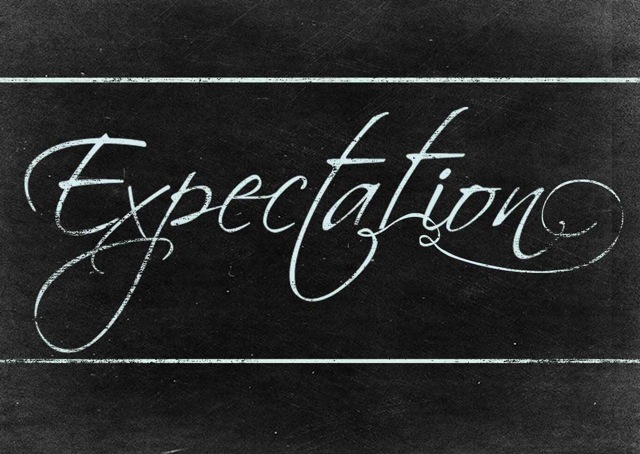A teacher’s beliefs about students’ chances of success in school influence the teacher’s actions with students, which in turn influence students’ achievement. If the teacher believes students can succeed, she tends to behave in ways that help them succeed. If the teacher believes that students cannot succeed, she unwittingly tends to behave in ways that subvert student success or at least do not facilitate student success. This is perhaps one of the most powerful hidden dynamics of teaching because it is typically an unconscious activity.
R. J. Marzano (2007,
p. 162)
Perhaps our true calling in education is to hold ourselves and
all our students accountable for superior performance.
Expectations are a
critical component of what we do in Harney County schools. Truthfully, unbelievably great students like many in our schools stand out as exceptional young people in every way.
Although we have all helped them grow, they succeed primarily as a result of loving
parents who hold their own lofty expectations for their children. Although not
every student will realize that level of success, we can and should expect each
of our students to succeed at the very highest level possible for them as
individuals—even knowing that, in many instances, we are the best adult role
models and parents they may have in their lives.
Anyone
who has spent a large amount of time talking with me about education knows that my
core charge to educators is simply this: we
must clearly establish high expectations for students and then set about
building relationships with them such that they will want to meet our
expectations. Although this is just an educated guess based on fourteen years of
teaching experience, as opposed to any massive research I have conducted on
this topic, I suspect that nothing influences how well our students perform in
terms of academics and behavior as much as the expectations we hold for them
and the old adage of firm, fair, and consistent. Probably
the most famous study in the area of teacher expectations for students is
Rosenthal and Jacobson’s Pygmalion in the Classroom (1968) in which
teachers were told at the outset that 20% of their students (randomly selected)
were identified as “spurters” whose academic performance would likely grow
dramatically during the year. Sure enough, at the end of the year, these 20%
significantly out gained the 80% who were not identified as “spurters” on an
academic achievement test.
Marzano
(2007) discusses two categories of teacher behaviors that communicate
expectations to students: affective tone and quality
of interactions with students. Affective tone refers to the
extent to which teachers establish positive emotions in classrooms. In terms of
quality of interactions, research shows that teachers differ in their
interactions with high- versus low-expectancy students. To avoid differential
treatment in terms of affective tone, Marzano suggests examining whether we
treat “low-expectancy” students differently by:
§ Making less eye contact
§ Smiling less
§ Making less physical contact or
maintaining less proximity
§ Engaging in less playful or light
dialogue
Relative to
quality of interactions, he suggests examining whether we treat low-expectancy
students differently by:
§ Calling on them less
§ Asking them less-challenging questions
§ Not delving into their answers as deeply
§ Rewarding them for less-rigorous
responses
There is no doubt that as I reflect on my teaching career, I have fear that I was guilty of several of the
above differences in my treatment of students for whom I held lower expectations.
My intentions were not malicious; rather, I thought I was doing “lower”
students a favor by letting them off the hook at times or by making them deals. Of course, as Marzano
suggests, this thinking—though well-intentioned, perhaps—was folly. We must
work to communicate high expectations for all
students.
Many
students at our school have absolutely no vision of anything other than where
they are right now. We can help our kids create a different vision for
themselves through our words (including affective tone) and actions (including
quality of interactions). Many teachers at our school are obvious masters at
expecting their students to perform in a certain way and holding them
accountable for doing so. In a matter of days, their
students are well on their way to learning more than they ever thought
possible. If you have a chance, try to stop by classrooms for a peer
observation visit soon or invite others to see how you use expectations to
influence outcomes in your own classroom. Understanding that our expectations
for students influence outcomes and acting accordingly is another way we commit Getting it Done! at our school each day.
Have a Great Week!
Post modified and quoted from Jeff Zoul post E is for Expectations
Articles you may enjoy:
Videos to Check out
Phone booth with Shaq and Hugh Jackman (9min)
Showed this at Rural inservice--just a reminder!!! (4 min)
Lyrical DOK explanation (4min)
Calendar of Events:
Webinar: Training for Cumulative ADM Exit Adjustment--Oct 13, 2pm
PST/NmSQT Testing--Oct 14/28
PST/NmSQT Testing--Oct 14/28
Public release of report cards and detail sheets--Oct 15
Collection Window for IUID--Oct 15 opens
NAEP Coordinator Deadline to provide school info--Oct 16
SBAC/OAKS online practice tests available--Oct 20
K Assessment testing window closes--Oct 22
Collection Window for IUID--Oct 15 opens
NAEP Coordinator Deadline to provide school info--Oct 16
SBAC/OAKS online practice tests available--Oct 20
K Assessment testing window closes--Oct 22
Number Sense Training Opportunity--Oct 23-24 @ Harney ESD
K Assessment collection window closes--Oct 30
DTC Training online from ODE--Nov 3-5K Assessment collection window closes--Oct 30
E-RATE TRAINING @ Harney ESD--Nov 20 9AM-4pm
Deadline to distribute Report Cards to Parents--Jan 15

No comments:
Post a Comment